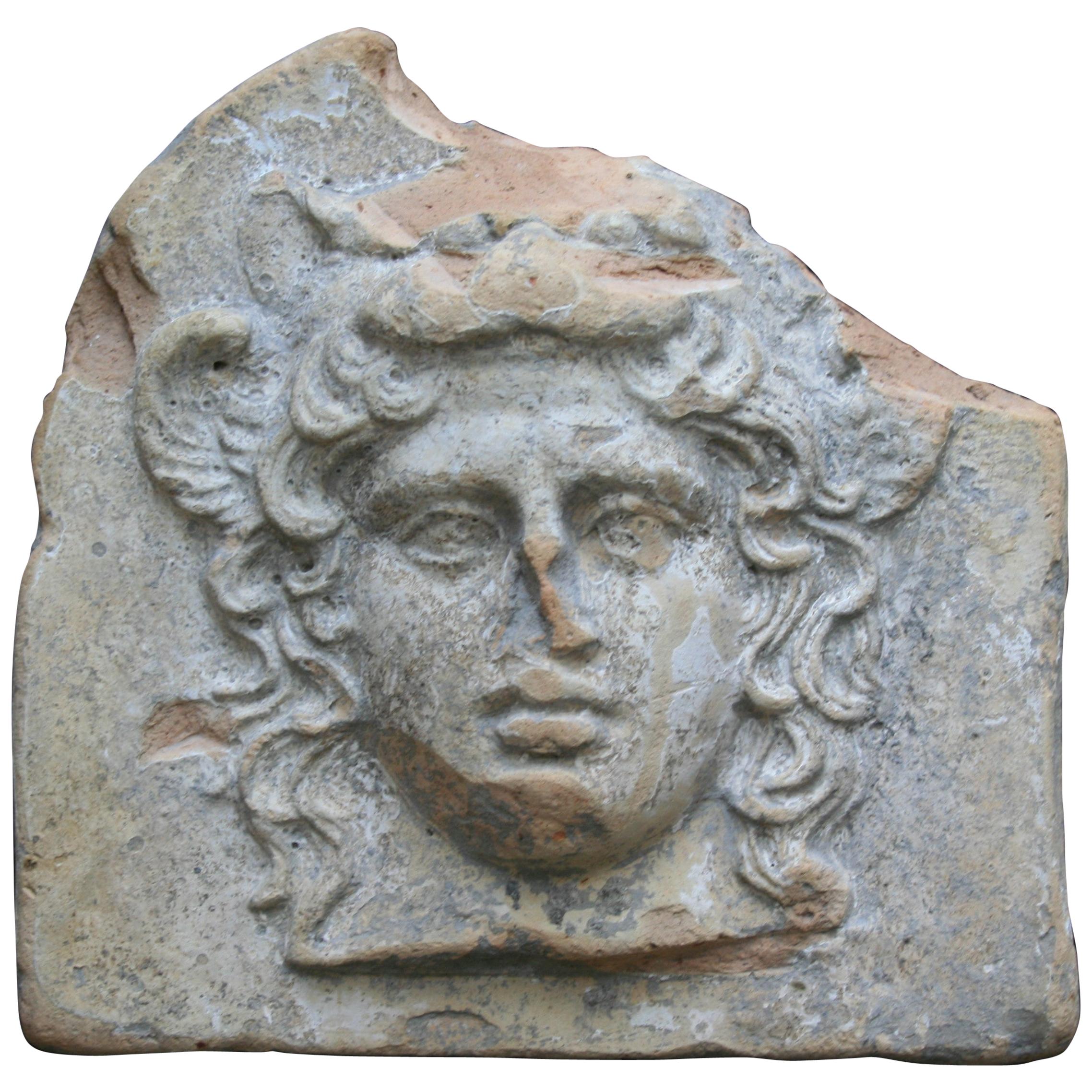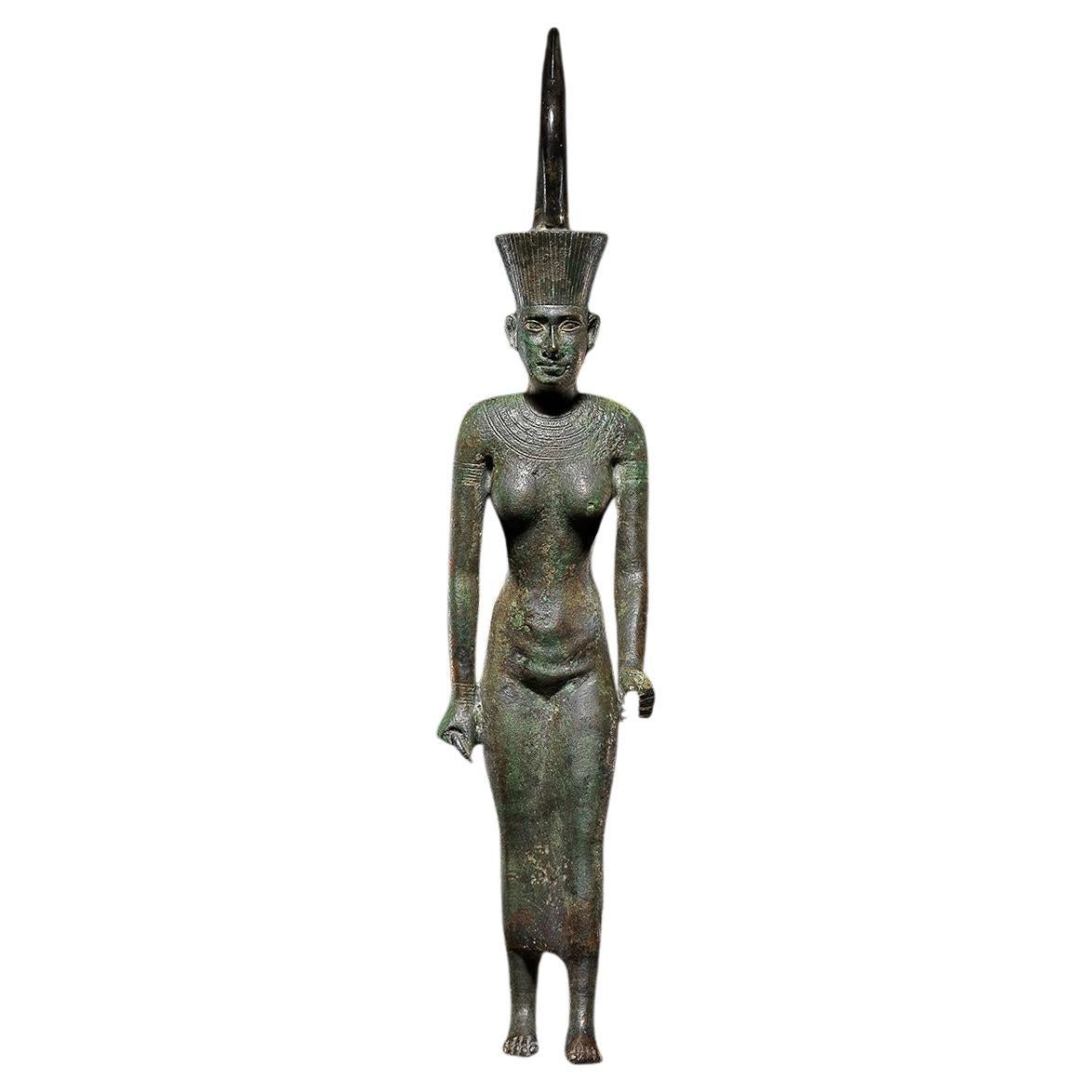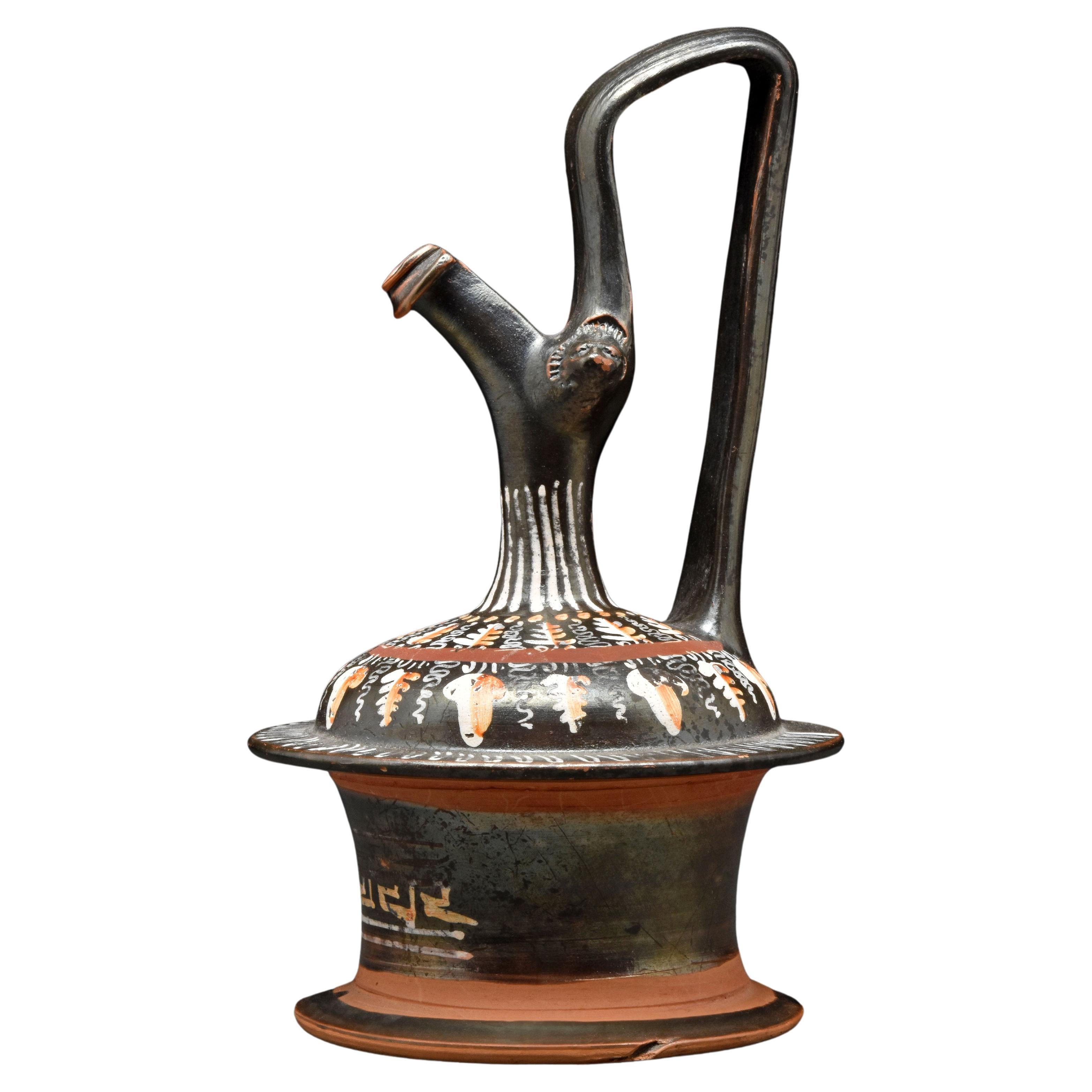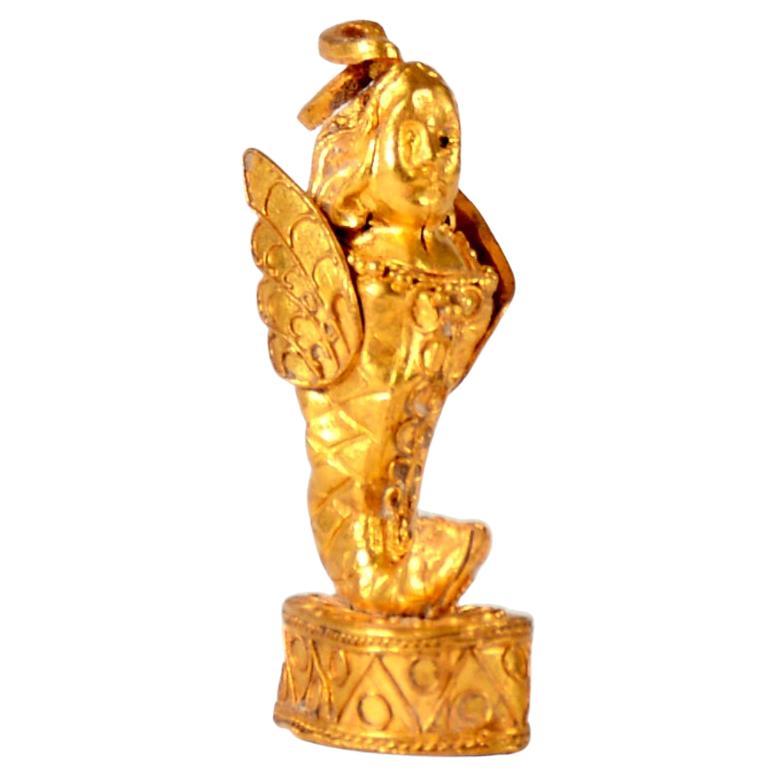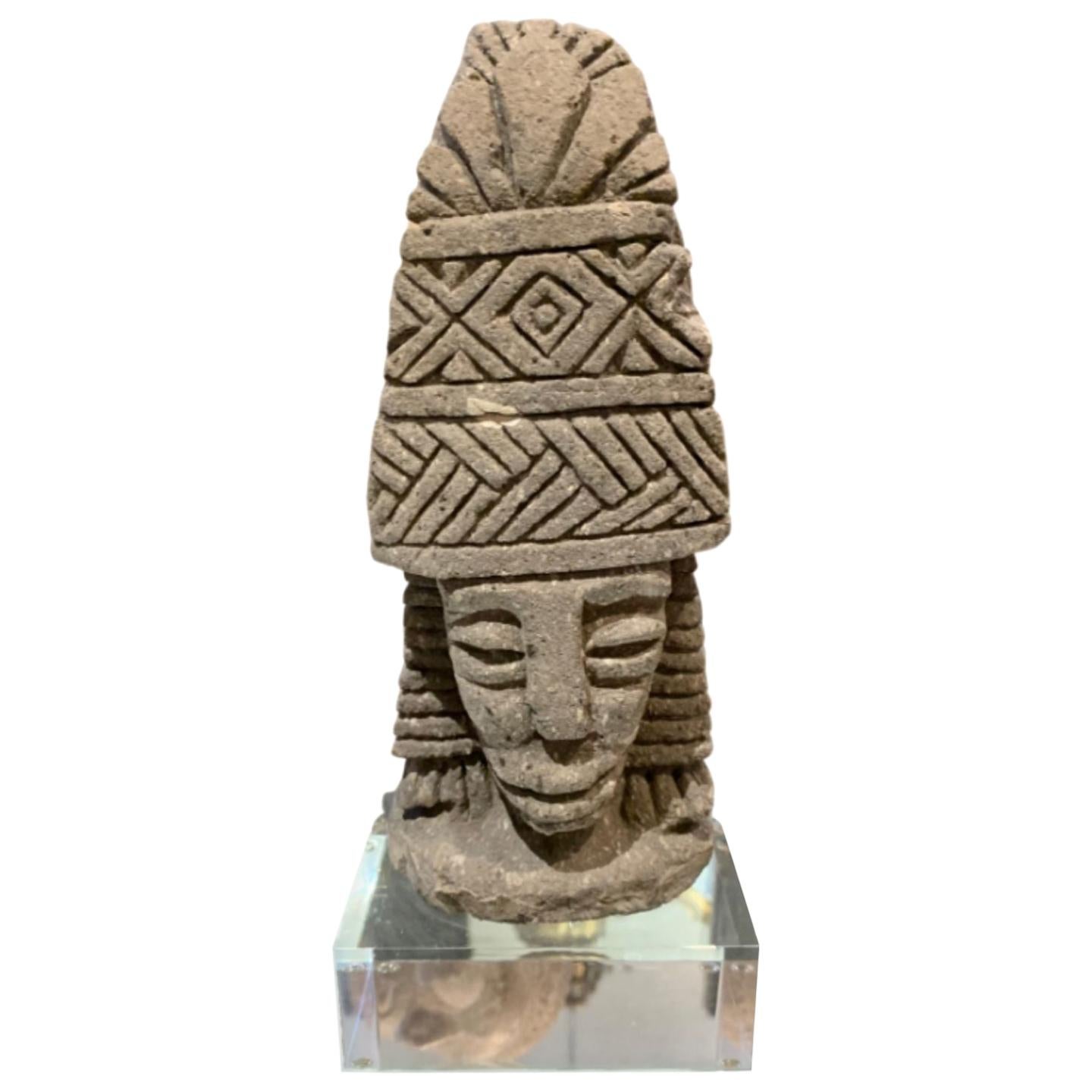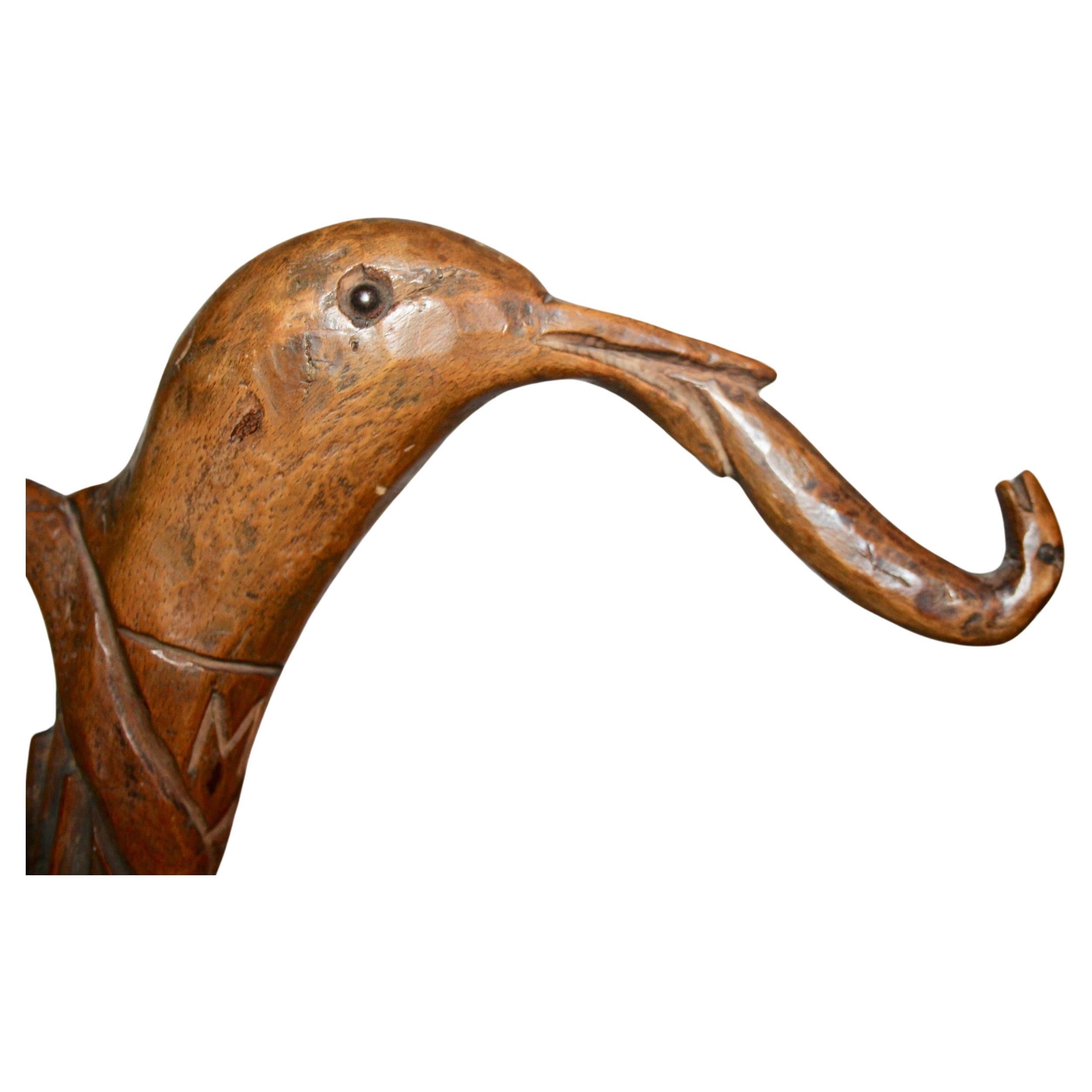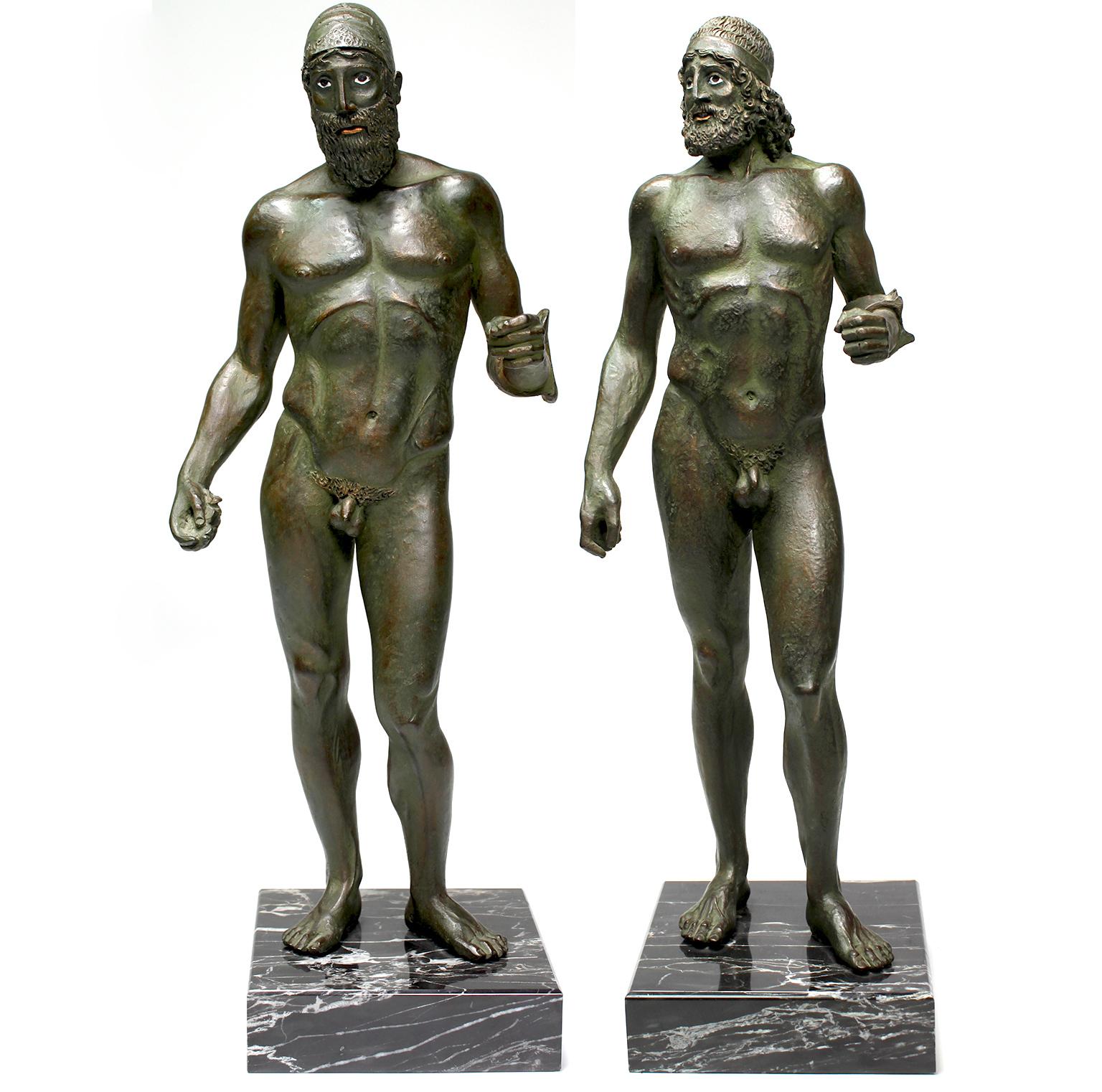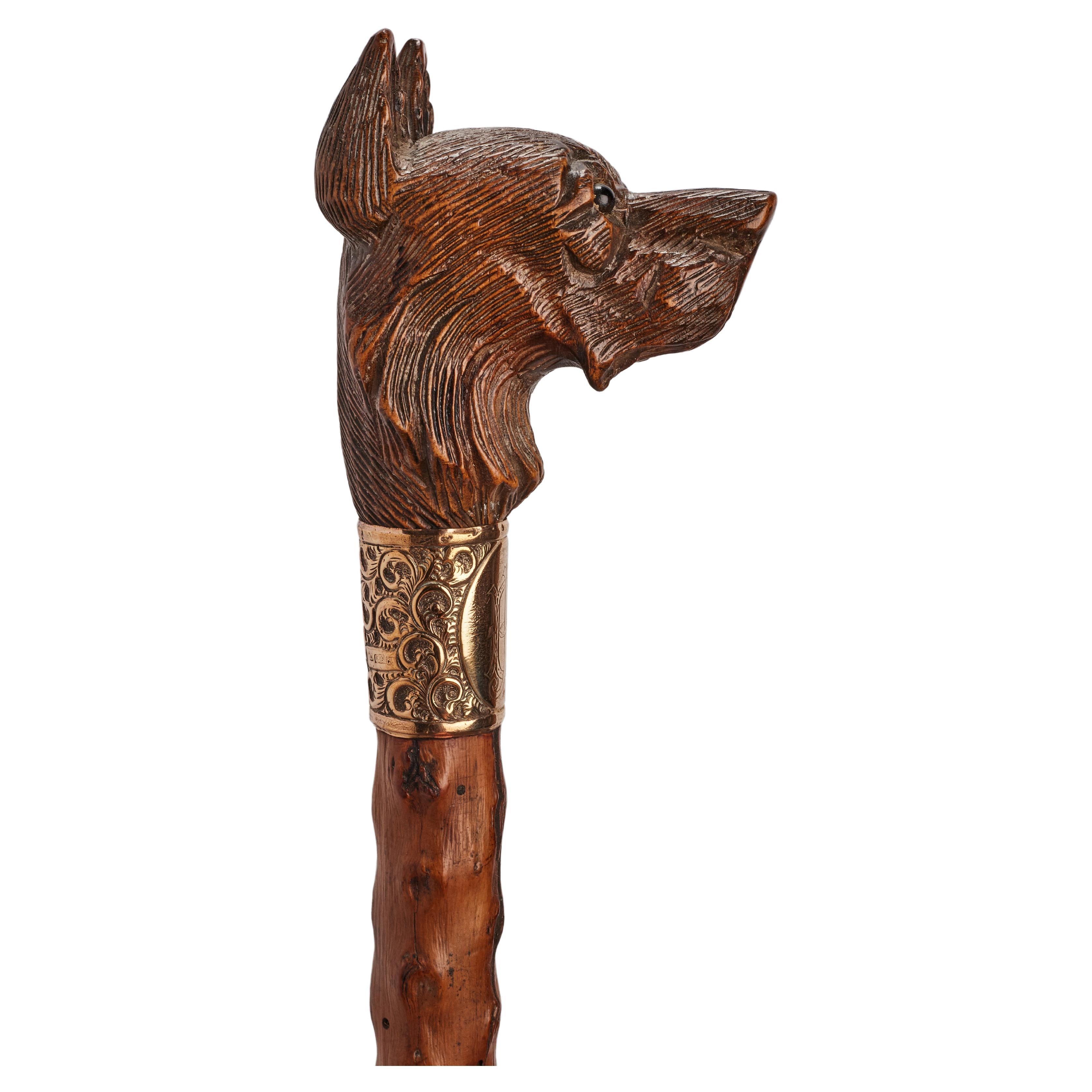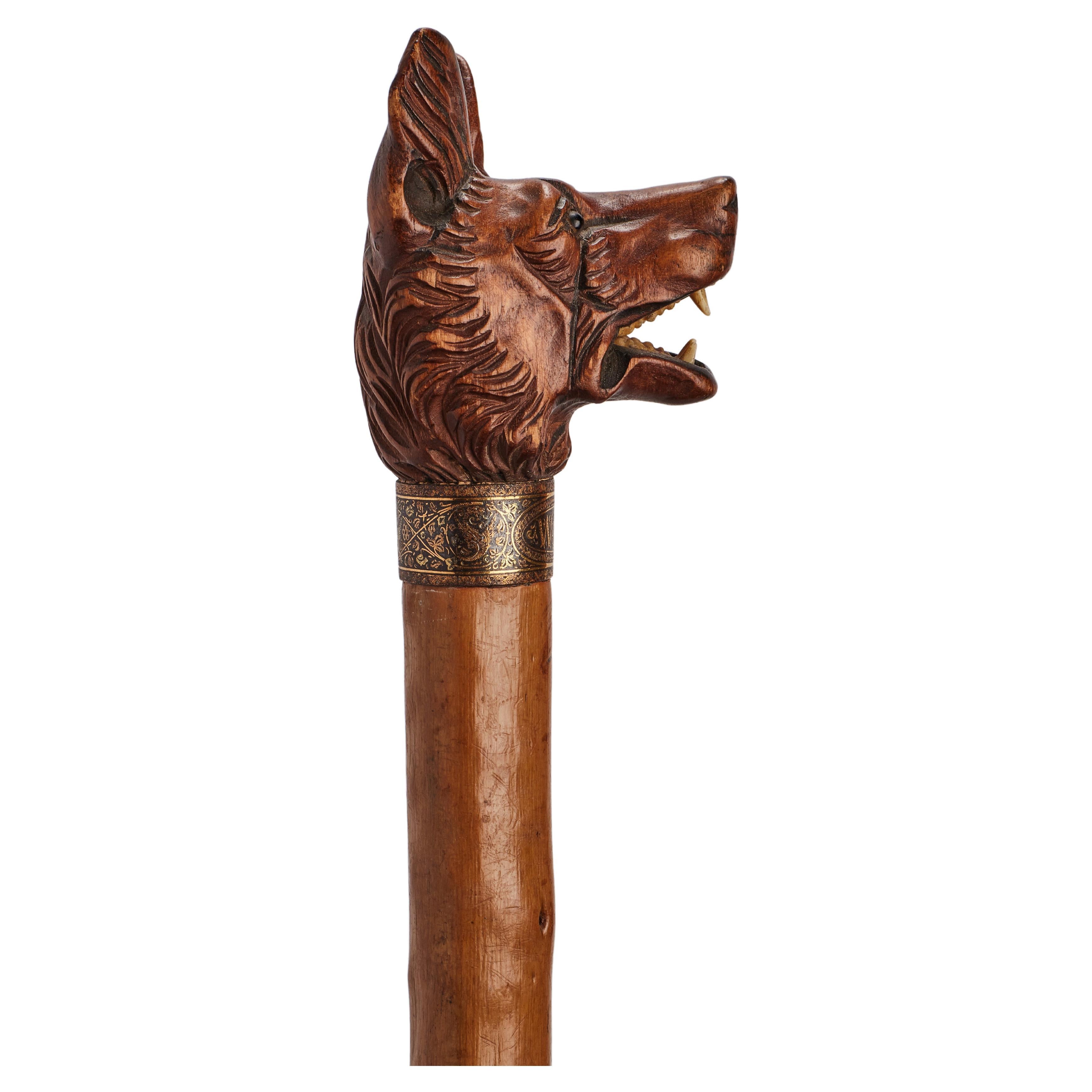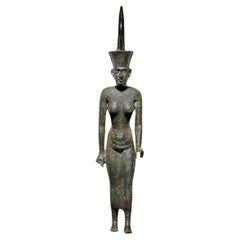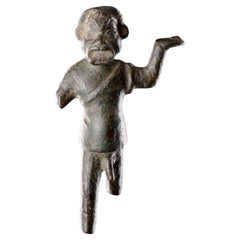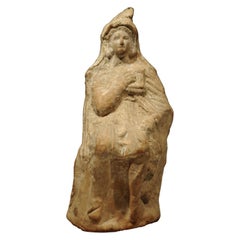
Greek Terracotta Statuette of a Shepherd God Playing the Syrinx
View Similar Items
1 of 5
Greek Terracotta Statuette of a Shepherd God Playing the Syrinx
About the Item
- Dimensions:Height: 5.36 in (13.6 cm)Width: 2.76 in (7 cm)Depth: 1.86 in (4.7 cm)
- Style:Classical Greek (Of the Period)
- Materials and Techniques:Terracotta,Molded
- Place of Origin:
- Period:
- Date of Manufacture:circa 4th Century BC
- Condition:Intact. No restorations.
- Seller Location:Zurich, CH
- Reference Number:Seller: CL10581stDibs: LU5021116418771
You May Also Like
- Ancient Greek Terracotta Antefix in Form of the Head of Artemis Bendis, TarantoLocated in Antwerp, BEAncient Greek mould-made terracotta antefix decorated with the female head of the Goddess Artemis Bendis. Western Greek, Italy, Taranto, early 4th century BC. Two small feathered win...Category
Antique 15th Century and Earlier Italian Classical Greek Antiquities
MaterialsCeramic
- Statuette of the Goddess NeithLocated in London, GBBronze statue of the goddess Neith, striding, her left foot extended forward. Her left hand is extended forward and formally held a papyrus sceptre, a fragmentary ankh is visible in her right hand. She wears a close-fitting sheath dress, incised with a broad usekh collar, and carefully engraved bracelets and armlets. On her head is the Red Crown of Lower Egypt, decorated with vertical striations and restored spiral and spire. Her face is finely molded, with a broad upturned nose and electrum-overlaid eyes and eyebrows. Neith was one of the earliest recorded gods in the Egyptian pantheon, worshipped from early in the Predynastic era through to the arrival of Roman rule. A war goddess and goddess of weaving, she was the patron goddess of the Red Crown of Lower Egypt and the city of Zau (Sais, in the 5th Nome of Lower Egypt) in the Delta. A powerful and popular goddess, she was, according to the Iunyt (Esna) cosmology, the creator of the world and the mother of the sun, Ra. This made her the mother of all of the gods, who often came to her to settle their disputes. Her symbols are the bow and arrows and a sword and shield as a war goddess, a weaving shuttle as a funerary goddess, and the Red Crown of Lower Egypt as the goddess of creation and mother goddess. She is usually depicted as a woman wearing the Red Crown of Lower Egypt, however, she is occasionally depicted as a cow in connection with her role as the mother of Ra. The use of electrum, a naturally occurring alloy of gold and silver sometimes called ‘green-gold’, for the eyes speaks to the high status of the object. Electrum had been used by the Egyptians since at least the 3rd millennium B.C., but, give its rarity, was reserved for the most expensive and important objects. Most electrum used in Egypt was imported from Nubia, though some was found there. Published: Parke-Bernet Galleries, New York, February 25th, 1971, no. 70, illus. Sotheby’s, New York, June 5th, 1999, no. 31, illus. David Aaron Ltd...Category
Antique 15th Century and Earlier Egyptian Egyptian Antiquities
MaterialsBronze
$127,872 - A Rare and Finely Detailed Greek Bronze Statuette of an Actor with Large PhallusLocated in London, GBA Rare and Finely Detailed Greek Bronze Statuette of an Actor with Large Phallus Bronze Greek First half of 4th Century BC Size: 10.5cm high - 4¼ ins high Provenance: Ex Privat...Category
Antique 15th Century and Earlier Greek Antiquities
MaterialsBronze
- Greek Gnathian EpyichysisLocated in London, GBA delicate South-Italian epichysis. The vessel was a wine jug, composed of a narrow neck, a small lip and a high-arching handle. This Gnathian-ware epichysis was decorated with tongu...Category
Antique 15th Century and Earlier Italian Classical Greek Antiquities
MaterialsTerracotta
- Greek Black Glaze Pottery GuttusLocated in London, GBA black-glazed terracotta guttus (oil-lamp filler) with a spool-shaped foot, a wheel-shaped body, a protruding ring handle, and a cylindrical spout with an everted rim. The tondo fea...Category
Antique 15th Century and Earlier Italian Classical Greek Antiquities
MaterialsPottery
- Greek gold pendant with siren figurine, HellenisticLocated in UTRECHT, UTA gold pendant in the shape of a siren with a human head, hair parted and falling onto back, human upper body, wings on back, standing on drum-shaped pedestal, decorated with granule...Category
Antique 15th Century and Earlier Greek Classical Greek Antiquities
MaterialsGold
Recently Viewed
View AllMore Ways To Browse
Antique Votive
Antique Votives
Used Folk Instruments
Greek Pan
Flute Musical Instrument
Antique Flute Musical Instruments
Brown Terracotta Molded
God Pan
The God Pan
Pan Greek God
Greek Terracotta Head
400 Bc
Pan Pipes
Antique Preserving Pan
Terracotta Votive
Antique Folk Art Walking Stick
Pre Columbian Aztec
1400 Ad
